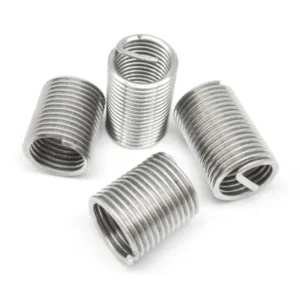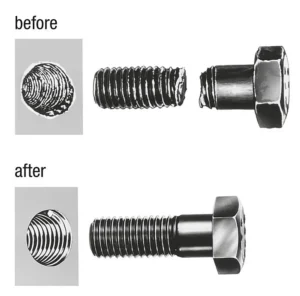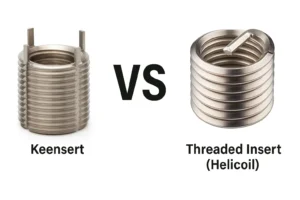Are Jack Nuts Reusable?
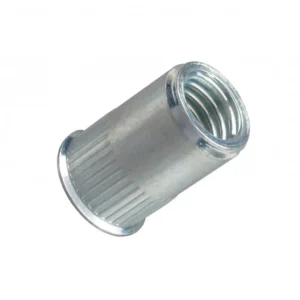
Leading Rivet Nut Manufacturer and Supplier in China
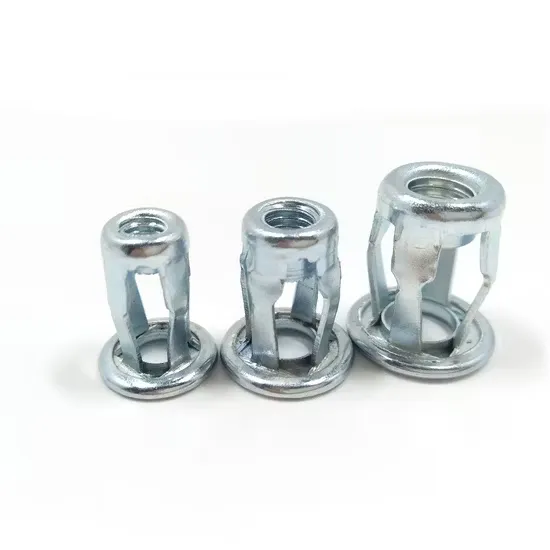
Wondering if Jack Nuts are reusable? While these reliable fasteners are designed for secure connections, their reusability depends on factors like wear, installation conditions, and material integrity. In this blog, we’ll explore when Jack Nuts can be safely reused and the best practices to ensure their longevity and performance.
Table of Contents

Jack Nuts are fasteners designed for connecting thin sheets or soft materials, especially in situations where direct threading is not feasible. They work by expanding their legs behind the material, creating a secure internal thread for bolts or screws.
Advantages of Jack Nuts:
- Easy to Install – Can be installed using simple manual or mechanical tools with minimal effort.
- Suitable for Thin and Soft Materials – Provides a stable threaded connection in materials like metal sheets, plastics, and wood.
- No Pre-Tapped Holes Required – Solves the difficulty of direct threading, especially in thin or hard-to-machine materials.
However, as Jack Nuts are used over time, a common question arises: Are Jack Nuts reusable? The answer depends on several factors, including material condition, installation method, and environmental exposure. Understanding the reusability of Jack Nuts is essential for maximizing their lifespan and ensuring a secure connection.
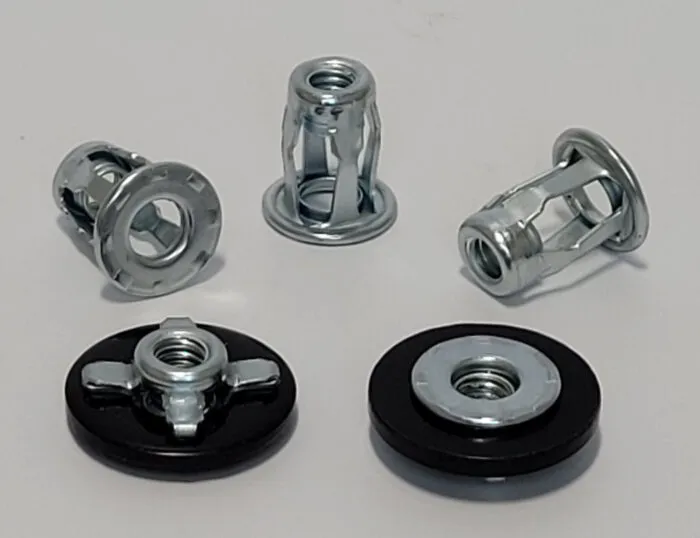
Jack Nuts are specialized fasteners designed to provide a secure threaded connection, particularly in thin metals, plastics, wood, and other soft materials. Their unique working mechanism and installation method make them an efficient and convenient fastening solution.
1. Basic Working Mechanism of Jack Nuts
Jack Nuts create a stable threaded connection in soft materials through their distinctive design. The working principle is as follows:
- Expansion Leg Design – A Jack Nut typically consists of a nut body and multiple expansion legs. When installed into a material, the expansion legs spread outwards and grip the back surface of the material. This expansion increases the contact area, enhancing the fastening strength in soft materials.
- Creating an Internal Threaded Connection – After the expansion legs have fully spread, the Jack Nut provides an internal thread for bolts or screws. Unlike traditional direct tapping, Jack Nuts can create a reliable threaded connection even in materials without pre-tapped holes.
2. Installation and Expansion Process of Jack Nuts
The installation and expansion process of a Jack Nut is key to its strong holding power:
- Installation Process – To install a Jack Nut, it is first inserted into a pre-drilled hole. Then, by applying pressure using a manual tool, pneumatic tool, or hydraulic tool, the Jack Nut is pulled through the material until its expansion legs make contact with the back surface.
- Expansion Process – Once sufficient pressure is applied, the expansion legs of the Jack Nut will flare out and tightly grip the material’s inner surface. At this stage, the Jack Nut is securely fixed, forming a strong threaded connection point.
- Secure Fastening – Once the expansion legs have successfully deployed, the Jack Nut remains firmly in place. Compared to traditional self-tapping screws, Jack Nuts provide a more stable fastening solution in thin metals and soft materials without causing material breakage or deformation.
Are Jack Nuts Reusable?
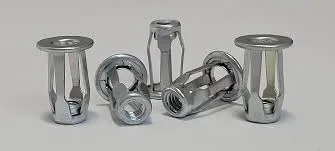
Jack Nuts are widely used fasteners for securing various materials. For many users, understanding whether Jack Nuts can be reused is crucial. To answer this, we need to consider their typical lifespan and the key factors affecting their reusability.
1. Typical Lifespan of Jack Nuts
The lifespan of Jack Nuts depends on factors such as material composition, environmental conditions, and installation quality. When properly installed and used in suitable conditions, Jack Nuts can provide a stable threaded connection for an extended period. However, with repeated installation and removal, their holding strength may degrade over time, particularly due to material fatigue, wear, or corrosion. In high-strength applications or situations requiring frequent disassembly, the lifespan of Jack Nuts may be significantly limited.
2. Can Jack Nuts Be Reused?
Jack Nuts are designed to be removable fasteners, meaning they can theoretically be reused. However, in practice, their reusability depends on several factors. Below are the key considerations:
(1) Material of Jack Nuts
Different materials impact how well Jack Nuts can be reused:
- Steel Jack Nuts – Steel Jack Nuts are strong and durable, making them suitable for heavy-load applications. They can often be reused if they have not been overtightened or physically damaged during installation. However, prolonged exposure to moisture or corrosive environments may lead to rust and wear, reducing their lifespan.
- Stainless Steel Jack Nuts – Stainless steel offers excellent corrosion resistance, making these Jack Nuts more suitable for multiple reuses, especially in outdoor or humid environments. Their high strength allows them to maintain their holding power over multiple installations, provided they are not damaged or excessively worn.
- Aluminum Jack Nuts – Aluminum Jack Nuts are lightweight and best suited for low-load applications. Due to the softness of aluminum, they are more prone to deformation or damage when reused, particularly if overtightened. Therefore, they are not recommended for frequent reuse in high-strength applications.
(2) Type of Installation Material
The material in which the Jack Nut is installed also plays a role in determining its reusability. Different materials exhibit varying levels of wear, strength, and durability:
- Plastic – In soft materials like plastic, Jack Nuts may lose their holding power quickly, especially with repeated installation and removal. Since plastic has a weaker grip on fasteners, the threaded connection may loosen over time, making frequent reuse impractical.
- Thin Metal – In thin metal applications, particularly softer metals, Jack Nuts generally provide a secure hold. However, repeated installation and removal can cause wear or deformation of the metal surface, reducing the effectiveness of reinstallation. Careful handling is needed to prevent surface damage.
- Wood – Wood offers good thread retention but is prone to splitting or damage if overtightened. While Jack Nuts can be reused in wood, care must be taken to avoid excessive tightening or frequent removal, which could weaken the connection.
(3) Over-Tightening or Damage During Installation
The way Jack Nuts are installed also affects their reusability. If they are overtightened or mishandled, both the Jack Nut and the installation material can suffer damage, making reuse difficult.
- Over-Tightening – Applying excessive torque can cause the expansion legs of the Jack Nut to spread too far or deform, preventing effective reinstallation. In such cases, the Jack Nut may not provide the same level of grip in subsequent uses.
- Material Damage – If the installation material cracks, tears, or deforms during the process, even an undamaged Jack Nut may fail to hold securely upon reuse. Inspecting the material for integrity and controlling installation force properly can help extend the lifespan of both the Jack Nut and the material.
Conclusion - Are Jack Nuts Reusable?
The reusability of Jack Nuts depends on various factors, including their material, the type of installation material, and the installation process. Steel and stainless steel Jack Nuts can often be reused under normal conditions, while aluminum Jack Nuts are less suitable for frequent reuse due to their softer composition. To maximize reusability, avoid over-tightening and ensure the installation material remains intact.
Do You Have Any Questions?
Let Us Solve Your Problem
Factors Affecting Jack Nuts Reusability
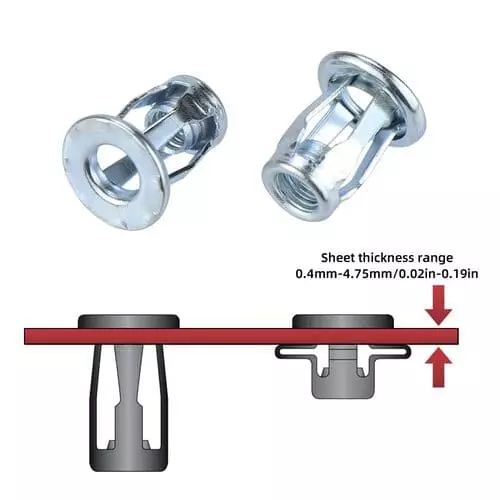
1. Condition of the Installation Material
The reusability of Jack Nuts is influenced by the material in which they are installed. The durability of the threaded connection and the resistance of the material will directly affect whether the Jack Nut can be used again.
In soft materials like plastic, the threaded connection of Jack Nuts may degrade after multiple installations, especially when the plastic deforms or becomes fatigued. Since plastic has lower hardness and durability, repeated installation and removal may cause the threads to loosen or become damaged. Lower-quality plastic materials are particularly prone to cracking during removal, reducing their reusability.
When used in metals (such as thin steel plates or aluminum alloys), Jack Nuts generally exhibit good durability and can withstand multiple installations and removals. However, frequent removal and reinstallation may gradually wear down the surface of the material, particularly if the metal is thin or soft. Surface wear or deformation may prevent Jack Nuts from securing effectively, thereby reducing their reusability.
Jack Nuts for Wood:
Wood provides a certain level of thread retention, but its fragility can make repeated use of Jack Nuts problematic. Excessive pressure on the threaded contact area may cause cracks or permanent damage to the wood. Therefore, the reusability of Jack Nuts in wooden materials is limited, and extra caution is required to prevent irreversible damage.
2. Installation Method
Proper installation techniques are crucial for enhancing the reusability of Jack Nuts. Using improper tools or incorrect installation methods may damage both the Jack Nut and the installation material, making reuse difficult.
Tool Selection:
The type of tool used—whether a manual wrench, rivet gun, pneumatic tool, or hydraulic tool—affects the precision and evenness of force applied during installation. Improper tool use can cause the expansion legs of the Jack Nut to deform, leading to an insecure connection and reducing its reusability. While pneumatic and hydraulic tools offer greater precision, it is still important to apply controlled force to avoid overtightening or damage.
Force Control During Installation:
If the torque applied during installation is not properly controlled, the Jack Nut may either be overtightened or left too loose. Overtightening can deform the expansion legs or damage the material, while insufficient tightening can result in an unstable connection that cannot bear loads effectively. Maintaining the correct level of force during installation is key to ensuring the Jack Nut remains reusable.
3. Wear and Tear
Over time, the repeated use of Jack Nuts can cause wear and tear, affecting both the fastener and the material it is installed in. This wear reduces the overall effectiveness of the connection.
Expansion Leg Wear:
During installation, the expansion legs of the Jack Nut are pressed and spread out to secure it in place. Repeated installations and removals can wear down the surface of these legs, reducing their ability to expand properly and weakening the grip. If the expansion legs are excessively worn, the Jack Nut will no longer provide a secure connection.
Thread Wear:
Both the internal threads of the Jack Nut and the threads formed in the installation material can wear down with multiple uses. As the thread edges lose sharpness, the connection will become less stable, increasing the risk of loosening or failure upon reuse.
Surface Wear of the Installation Material:
Frequent installation and removal can also cause surface wear on the installation material, particularly on metal or plastic surfaces. This wear can reduce the Jack Nut’s ability to hold securely and negatively impact its performance after multiple uses.
4. Corrosion and Environmental Factors
Environmental conditions significantly impact the reusability of Jack Nuts. Prolonged exposure to corrosive environments, humidity, or high temperatures can accelerate material degradation, reducing the likelihood of reuse.
Humid Environments:
In humid conditions—especially outdoors or in areas exposed to chemicals—metal materials like carbon steel are prone to rust. Corrosion can weaken both the Jack Nut and the installation material, reducing their connection strength. Rust buildup may also make Jack Nuts difficult to remove or reinstall, limiting their reusability.
Exposure to Chemicals:
Contact with chemicals, acidic or alkaline substances, can accelerate corrosion or material degradation. Carbon steel and aluminum alloys are particularly vulnerable in environments with strong acids or bases, which can significantly impact their ability to be reused.
High-Temperature Environments:
Exposure to high temperatures can cause metals to expand or soften, affecting the holding strength of Jack Nuts. Excessive heat can also cause plastic materials to soften or deform, leading to thread failure and reducing the reusability of the fastener.
When Are Jack Nuts Reusable?
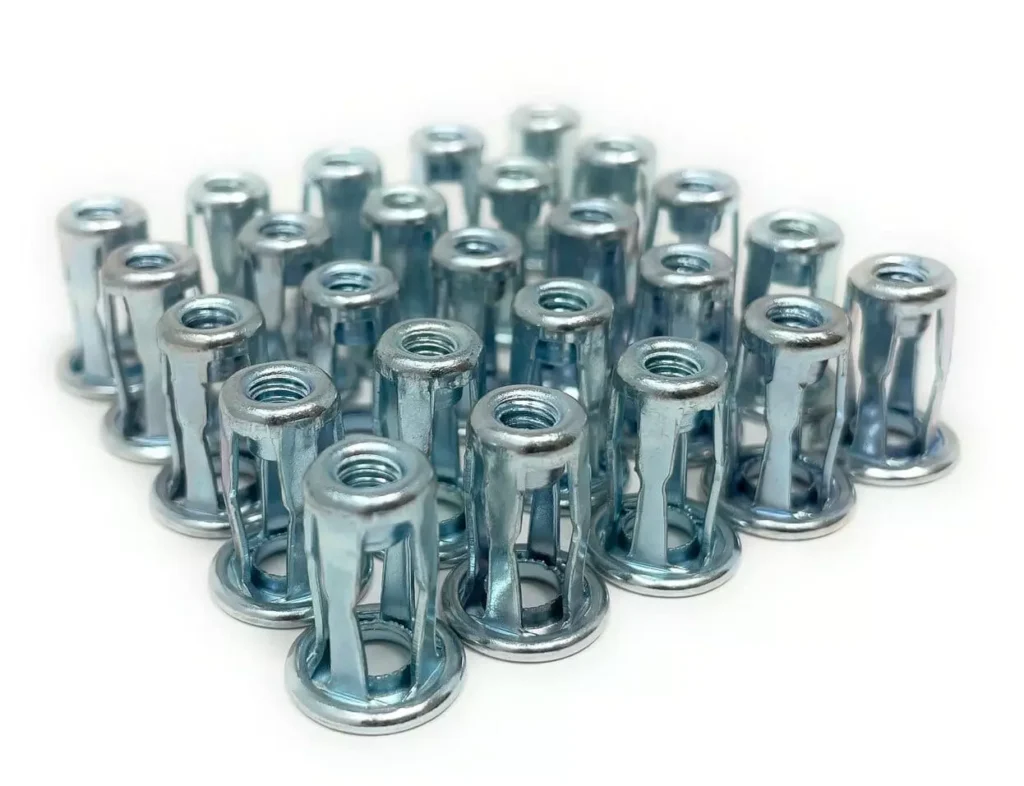
The reusability of Jack Nuts depends on their usage environment, application type, and post-installation condition. Below are situations where Jack Nuts can still be safely reused and how to check whether they are fit for reuse.
1. Situations Where Jack Nuts Can Be Reused
Light Load Applications:
Jack Nuts can be safely reused in applications where they are subjected to light loads. For example, in light machinery, furniture assembly, and electronic equipment, the required tensile or shear force is relatively low, meaning the Jack Nuts may not experience significant damage and can be used again.
Non-Critical Environments:
If Jack Nuts are used in non-critical assemblies—such as household appliances or lightweight furniture—where high safety requirements are not a concern, they may still be reusable even if minor wear or slight deformation occurs, as long as their functionality remains intact. In these cases, the reusability of Jack Nuts is relatively high.
No Significant Damage:
In some cases, even after multiple uses, a Jack Nut can still be reused as long as it has not suffered excessive damage, such as thread stripping or severe deformation of the expansion legs. For instance, if only minor scratches or surface wear are present and the thread engagement remains secure, the Jack Nut may still be safe for reuse.
2. How to Check If Jack Nuts Are Safe for Reuse
When considering whether a Jack Nut can be reused, the following inspections should be performed to ensure its safety and reliability:
Check for Thread Damage:
Threads are crucial for securing the Jack Nut to the installation material. If the threads show significant damage, wear, or looseness, the Jack Nut will not provide effective holding strength. After removal, inspect the threads for any visible signs of excessive wear or breakage. If thread damage is found, the Jack Nut should not be reused.
Check for Deformation of the Expansion Legs:
The expansion legs of a Jack Nut are designed to press and spread out against the material to create a secure fit. If these legs become excessively deformed, lose their elasticity, or appear asymmetrical, the Jack Nut’s holding power will be significantly reduced. Even if the threads remain intact, a Jack Nut with deformed expansion legs may not provide a stable connection and should be replaced.
Check for Cracks or Breakage:
During installation or after repeated use, Jack Nuts may develop cracks or breakage, especially in high-load environments or under frequent installation and removal. If any cracks or fractures are detected, the Jack Nut should be discarded immediately, as cracks can lead to failure under load.
Check for Wear on the Installation Material:
The contact surface between the Jack Nut and the installation material, particularly in soft materials such as plastic or wood, may wear down over multiple uses. If noticeable wear, cracks, or damage are found on the contact surface, this may affect the Jack Nut’s ability to hold securely, reducing its reliability for reuse.
Check for Rust or Corrosion:
If the Jack Nut is made of metal (such as carbon steel) and has been used in humid or corrosive environments, rust and corrosion may compromise its structural strength and reliability. Inspect for visible rust or signs of corrosion. This is especially important for stainless steel and aluminum Jack Nuts, as corrosion can reduce their durability and reusability.
When to Replace Jack Nuts?

Jack Nuts are reliable fasteners used for securing lightweight structures and soft materials. However, over time and with repeated use, they may experience wear or damage, affecting their performance and safety. In certain cases, replacing Jack Nuts promptly is essential to ensure secure connections and structural integrity.
1. Signs That a Jack Nut Is No Longer Reusable
Thread Damage:
Threads are the core component of a Jack Nut’s fastening ability. If the threads are worn, stripped, deformed, or broken, the Jack Nut will no longer provide a secure hold. Damaged threads can prevent the bolt from being properly inserted, leading to looseness and connection failure. If thread damage is detected, the Jack Nut should be replaced immediately to avoid instability or safety risks.
Corrosion:
Jack Nuts made from carbon steel may develop rust when exposed to moisture or corrosive environments. Corrosion weakens the Jack Nut’s strength and stability and may cause the threads to become rough or loose. If rust is found, especially in applications frequently exposed to water or chemicals, replacing the Jack Nut is recommended.
Loosening:
The effectiveness of a Jack Nut relies on its expansion legs maintaining firm contact with the installation material. If the Jack Nut becomes loose and cannot be retightened or adjusted to restore its grip, this may be due to an improper hole size, thread wear, or deformed expansion legs. In such cases, replacing the Jack Nut is necessary to maintain a secure connection.
Deformation or Cracks:
Excessive installation force, heavy loads, or environmental factors can cause Jack Nuts to deform or crack. Under conditions such as vibration or impact, the expansion legs may become misshapen, preventing proper anchoring in the material. If a Jack Nut is found to be deformed or cracked, it should be replaced immediately to prevent failure.
2. When Is It Best to Replace a Jack Nut?
Frequent Removal and Reinstallation:
If a Jack Nut has been removed and reinstalled multiple times, especially in high-load or vibrating environments, its structural integrity may be compromised. Even if no visible damage is present, repeated use can reduce its durability. In such cases, inspecting the Jack Nut after each removal and replacing it when necessary is recommended to ensure a secure connection.
High-Load Applications or Harsh Environments:
Jack Nuts used in high-load, high-vibration, or extreme environments (such as high temperatures or high humidity) experience increased stress and wear. These factors accelerate the aging process, leading to damage to threads and expansion legs. In such demanding conditions, regular inspection is crucial, and any signs of wear or damage should prompt immediate replacement to maintain safety.
Improper or Changing Hole Size:
If installation errors result in an oversized or undersized hole for the Jack Nut, its effectiveness may be compromised. If the Jack Nut frequently loosens or fails to secure properly, check the hole size and replace the Jack Nut with a properly fitting one. Using an Jack Nut with incorrectly Jack Nut sizes increases the risk of an unstable connection and potential safety hazards.
Aging or Damaged Installation Material:
If the material where the Jack Nut is installed (such as plastic or wood) deteriorates, cracks, or breaks over time, the fastening performance may be affected. Even if the Jack Nut itself is intact, it may no longer be able to hold securely. In materials like wood or plastic, prolonged pressure can weaken their structure, reducing the Jack Nut’s holding power. In such cases, replacing the Jack Nut—or reinforcing the installation material—may be necessary.
Best Practices for Reusing Jack Nuts
1. How to Safely Remove and Reuse Jack Nuts
(1) Use the Right Tools for Removal
To ensure that the Jack Nut is not damaged during removal, use the appropriate tools, such as:
- Screwdriver or hex wrench (to loosen the bolt)
- Reverse pull-out tool (to extract the Jack Nut from the hole)
- Pliers or nail puller (if the Jack Nut is stuck or difficult to remove)
(2) Proper Removal Steps
- Unscrew the bolt: Use a screwdriver or wrench to turn the bolt counterclockwise and remove it completely.
- Loosen the Jack Nut’s expansion legs: Use pliers to gently squeeze the expansion section of the Jack Nut to help it return to its original shape, making removal easier.
- Slowly extract the Jack Nut: Avoid pulling it out forcefully, as this could damage the Jack Nut body or the mounting hole.
Note: If the Jack Nut is already deformed or damaged, it is recommended not to reuse it. Instead, replace it with a new one to ensure a secure connection.
2. Steps to Ensure Secure Reinstallation
(1) Inspect the Condition of the Jack Nut
Before reinstalling, check whether the Jack Nut is still in good condition by examining the following:
- Thread integrity: If the threads are worn or stripped, replace the Jack Nut with a new one.
- Expansion leg condition: If the expansion legs are severely bent or broken, the Jack Nut should not be reused.
- Signs of corrosion or rust: If a metal Jack Nut shows rust or corrosion, its durability may be compromised.
(2) Clean the Mounting Hole
- Ensure the mounting hole is not deformed or damaged.
- Use compressed air or a brush to remove dust and debris inside the hole for a secure fit.
- If the hole has expanded due to repeated use, consider using a slightly larger Jack Nut or replacing the mounting surface.
(3) Proper Reinstallation Steps
- Insert the Jack Nut into the mounting hole, ensuring its expansion legs are fully inside.
- Insert and tighten the bolt, allowing the Jack Nut’s expansion legs to spread evenly and create a firm grip.
- Check the fastening stability to ensure the bolt is secure and the Jack Nut remains firmly in place.
Tip: If the Jack Nut slips or fails to secure properly during installation, the expansion legs may be damaged, or the material may not be suitable for reuse. In such cases, replacing the Jack Nut is recommended.
Do You Have Any Questions?
Let Us Solve Your Problem
Buy Rivet Nuts from Rivetfix

As a leading fastener manufacturer in China with more than 15 years in the industry, Rivetfix are committed to providing first-class quality fasteners and responsive services to the world.
Rivetfix offers a wide range of rivet nuts and rivet nut tools designed to meet the unique demands of your projects. Rivetfix ensures you have the right solution for every application. Choose Rivetfix for versatile, cost-effective, and durable fastening solutions tailored to your specific needs. In addition, we can also provide customized rivet nuts service according to your requirements.
Contact us for project advice and the latest rivet nuts and rivet nut tools quote!
Get High Quality Rivet Nuts Quote!
Send Your Rivet Nut Request
For more than 20 years, Rivetfix has helped customers solve many rivet nuts sourcing needs and technical challenges.
Have a question? Contact us and we’ll provide you with the perfect solution.


